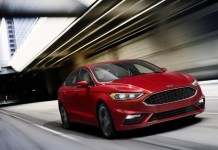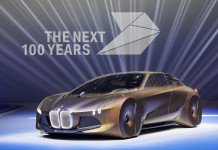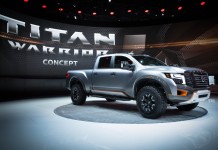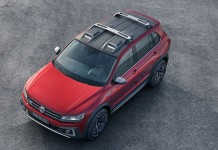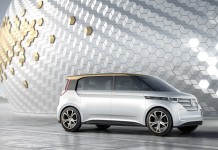Just how far can you take the basic idea of transportation and simplicity and still deliver an aspirational automobile designed for urban transportation in emerging markets?
For the global design team at the Ford Strategic Concepts Group in Irvine, Calif., it began with taking a step back, reflecting on the complexity and noise in the world around us.
“In an era of constant visual noise, we have created a car that conveys visual purity and harmony, in which every line has meaning and purpose. The Ford Start delivers a dynamic, personality driven design that stays true to the global Ford brand,” said J Mays, group vice president, Design, and chief creative officer.
The Ford Start Concept showcases a future 1.0-litre EcoBoost three-cylinder petrol engine which reinforces Ford’s ‘fun to drive’ DNA. This engine will provide the power and drivability comparable to a larger I4 engine while delivering a CO2 rating under 100 g/km. This smallest-yet EcoBoost engine will go into production in the near future.
The overall design philosophy for the Ford Start Concept was one of making music, not noise. It started with studying the key attributes that contribute to an endearing quality which modern small cars rarely deliver. The design team brought some inspirational vehicles into the studio to study the attributes that draw people to them, including an original Porsche 356 Speedster and an Alfa Romeo Zagato SZ.
With early sports cars and transportation in general, simplicity and purpose often was the key. Proportions, stance, silhouette, efficiency and a singular focus on what is really necessary for the driver were priorities – without sacrificing the fun and freedom that driving brought.
“The concept of simplicity can be found all around us,” Mays explains. “Endearing designs in architecture, home furnishings, appliances, transportation, or even a good screenplay are often similar in one respect – simplicity. Our vision was to look at a small car holistically, like slicing through an onion where every layer gave meaning, function, and substance to the next. As in nature, taking this approach creates beautiful, endearing objects.”
“As a team, we engaged in a philosophical discussion that yielded a common vision. To create a beautiful object that spoke to us emotionally as well as intellectually”, explains Freeman Thomas, design director. “The exterior design is simple with purposeful proportions and refined surface language normally found on vehicles in premium segments.”
The design team went through a variety of emotional iterations of front end designs to find the right balance and expression.
The team’s objective with the Ford Start Concept was to step back and ask what is really necessary. The result is that there is not a line the design team would wish to add or take away. The vehicle’s sculptural exterior takes into consideration efficient aerodynamics, from the front fascia, to the flush upper body design elements, and full underbody tray.
Exterior design elements were deliberately kept simple, functional, and consistent. The cars minimalistic approach extends through all of the design details around the car.
The interior compliments the direction of the exterior. It has been designed to be pure, tactile analog experience. The Start Concept interior was designed to evoke passion and driving excitement with the feeling one would expect from a more premium segment.
“The cockpit is about being the right size with everything you need in the right place,” Mays emphasizes. “We concentrated on providing only the information the driver really finds necessary. Great visibility was a major priority as well as driver control and passenger safety and space.”
An additional feature of the interior is “MyFord Mobile Concept,” a conceptual look into how to leverage smart phone interface with the popularity of personalized “apps”.
While the construction is simple and the number of parts was reduced, the execution of the front bucket seats results in a design that is not only form fitting but communicates an upscale, premium look. By integrating an ergonomically correct comfort curve and the optimal driving position, the seats were able to be thin and comfortable.
With snap-fitting inserts, the seat material and color allows for easy customization by the owner. The direction was to add to the purity and philosophy of the rest of the car by creating signature seating and headliner treatments that are unique. That uniqueness and purity extends to every area of the Ford Start Concept.
The Ford Start Concept also offers a personal trunk compartment. The trunk saves weight, gives more room to the rear passengers and provides a secure place for possessions.
Beyond basic transportation however, the Ford Start Concept is a case study and offers a glimpse into what is possible. The innovative hybrid aluminum/high strength steel body construction features a lightweight aluminum safety cell, which provides a rigid structure for the glass and roof to attach and houses side curtain airbags for additional occupant safety.
All exterior body panels are made from deformable, pre-colored recyclable composites. Natural sisal fiber is used to form the interior panels. The pressed aluminum wheels are mated with Michelin Green X tires featuring low rolling resistance and lightweight construction.
The holistic design approach – considering advances in the drivetrain, materials, and clever construction – demonstrates that a weight savings of 140 kilogrammes is possible.
“Start may be an advanced concept, but with its EcoBoost engine and strategic use of materials, it still delivers the fun we had driving our very first cars,” says Thomas.
“The Ford Start Concept is the first pure concept we’ve developed under our ‘One Ford’ approach,” says Moray Callum, executive director, Americas Design. “J Mays, Martin Smith and I worked with Freeman and his team to deliver a concept that visually reinforces the fun to drive element that is at the core of the Ford brand DNA.”
FORD START CONCEPT PREVIEWS EXPANDING ECOBOOST RANGE WITH ALL-NEW, THREE-CYLINDER 1.0-LITRE ENGINE
New three-cylinder Ford EcoBoost petrol engine supports the company’s future philosophy of more power for less fuel
- 1.0-litre Ford EcoBoost I3 will deliver comparable power and torque to a larger I4 engine combined with exceptional fuel economy for a petrol engine
- Anticipated CO2 emissions to be less than 100g/km
- Latest addition to the advanced Ford EcoBoost engine family will bring affordable and powerful technology to a mainstream vehicle lineup
On the exterior and interior of the Ford Start Concept, designers have provided a glimpse into the possible future of urban transportation for growing markets.
At the car’s heart however, Ford powertrain engineers are previewing something very real and close to being reality. It’s an all-new and compact addition to the advanced Ford EcoBoost petrol engine family, less than half the size of the initial 3.5-litre Ford EcoBoost V6 and with a capacity of one litre from just three cylinders.
Ford engineers have experimented with the idea of a three-cylinder engine for the past twenty years, but felt the power that could be achieved from such an engine configuration couldn’t be made substantial enough to offer a practical solution for smaller vehicles.
That’s all changed with the advanced yet affordable Ford EcoBoost technology, first introduced in 2009 and proving that substantial power and fuel savings can be realized through a combination of turbocharging and direct fuel injection.
This technology is being progressively introduced to widespread acclaim in mainstream Ford passenger cars and crossover vehicles – both in Europe and North America – in 3.5-litre V6 and 2.0-litre four-cylinder power units. The latest I4 Ford EcoBoost petrol engine provides class-leading power and torque – up nearly ten percent – and a reduction of carbon emissions by more than 15 percent.
The new 1.0-litre Ford EcoBoost engine is designed to use a cast iron block, cast aluminium cylinder head and cast aluminium sump. Its compression ratio will be 10:1. Its compact architecture makes it ideal for packaging in smaller vehicles – as the Start Concept demonstrates.
Extensive development shows power and torque levels comparable to a normally aspirated, 1.6-litre I4 powerplant and carbon dioxide emissions are expected to be under the 100 g/km threshold.
Further technical and timing details of the new 1.0-litre engine and the vehicles it will power will be provided closer to its production launch.





